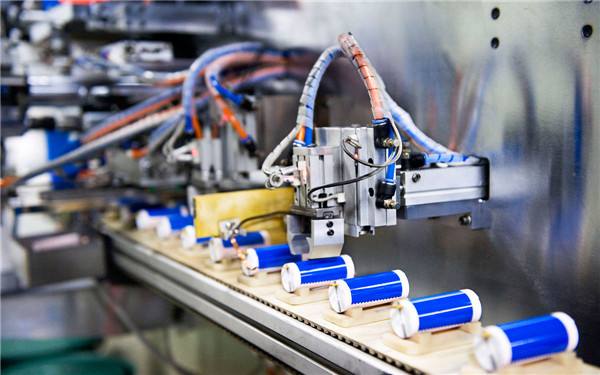Go Deep into the Lithium Battery Life
Jul 05, 2019 Pageview:1354
Before you go deep into this topic it is better to understand first as to what is the shelf life of batteries? The shelf life of the battery is the time that the battery can remain in the storage without losing its capacity. Three variables usually influence the aging of the battery: the active chemicals in the batteries, the retention temperature and the time it stays inactive.
Batteries and their components tend to decompose during storage self-discharge. Higher temperatures increase the rate at which a battery is discharged?and cooler temperatures lower self-discharging rates Electrolytes can penetrate through the seals, which are chemical in batteries that contain high ion concentrations. The battery thus gets dry and nonfunctional. Lithium rechargeable batteries ' shelf life differs depending on chemical compounds and uses. Many manufacturers curate their?chemical?compounds based on the use of the device.
Shelf Life of Lithium –Ion Battery
The typical estimated life of a Lithium-Ion battery is about two to three years or 300 to 500 charge cycles, whichever occurs first. One charge cycle is a period of use from fully charged, to fully discharged, and fully recharged again. Use a two to three years’ life expectancy for batteries that do not run through complete charge cycles. Rechargeable Lithium-Ion batteries have a limited life and will gradually lose their capacity to hold a charge. This loss of capacity (aging) is irreversible. As the battery loses capacity, the length of time it will power the product (run time) decreases.
When not in use or during storage, lithium-ion batteries continue to discharge (self-discharge). Check the charge status of the battery routinely. The product user manual typically includes battery status control information and instructions for battery charge. So don't avoid the battery by thinking the battery pack is five years long. It's not going to. You want to ensure it's new if you purchase a new battery pack. It won't last very long if it's been sitting on the shelves in the store for over a year. The battery quality affects its shelf-life, and higher quality manufacturers produce better batteries.
The self-discharging rate of the lithium-ion battery over a period:
· 5% in 24 h
· 10%-15% self-discharge per month at room temperature (usually stored witha 40% rate of charge).
· Irreversible capacity loss if stored for > 12 months
Shelf Life of Frequently Used lithium-ion battery:
If a lithium-ion battery is used frequently it does not have a long shelf life. Why? Because the term shelf life refers to the length of time you can take the battery pack on the shelf before charging. Shelf-life times are significantly impacted by humidity and temperature. The humid?and?warm storage environment shortens?the shelf-life. Here are some things you can do to maintain and extend your frequently used lithium battery's shelf life. This information will definitely help you in answering those questions that storm up in your head every now and them. How many years and months your battery will last before replacing it?
To clear the air of confusion, by contrast, battery life refers to how many hours or days on a single charge your phone will last?
The possible storage temperature range for Lithium-Ion batteries is -20°C to 60°C but for prolonged storage period -20°C to 25°C is recommended and 15°C is ideal. Cells should be stored with a partial charge of between 30% and 50%. Although the cells can be stored fully discharged the cell voltage should not drop below 2.0 Volts per cell and cells should be topped up to prevent over-discharge. Many lithium-ion can't offset 4.20V / cell for safety reasons. A higher voltage increases capacities, exceeding voltage and endangers safety.
The self-discharge?reactions both reduce the calendar (shelf-life) and cycle-life of the negative electrode of lithium-ion cells by developing SEI.
When a lithium-ion battery is discharged below 2.5 volts per cell, a battery built-in safety circuit opens and the battery seems to be dead. No use will be rendered of the original charger. Only battery analyzers get an opportunity to recharge the battery with the boost function. Also, if they have been stored in that condition for several months, do not recharge deeply discharged lithium-ion batteries for safety reasons. No matter if charged or discharged, an old battery provides less energy than a virgin battery. At high temperatures, Lithium-ion batteries degrade and lose the capacity when overcharged. So it is better to discharge a lithium-ion battery to approximately 40% for prolonged storage and store it in a cool place.
From our observation and experiences, mobile phones, laptop, and tablet will usually have a shelf life acceptable at most 3 years with 500 cycles. As replacing your device's lithium-ion battery is more difficult than treating it right first.
How to Care For lithium battery Life:
Rechargeable Lithium batteries involve routine maintenance and assistance in their use and handling. Read and follow the rules in this article to ensure the safe use of Lithium batteries and maximize battery life.
· Note the time required for powering your product by a new fully charged battery. To compare run times to older batteries, use this new run?time. The battery life will vary according to the configuration of the product and your applications.
· Check regularly the charge status of the battery.
· Monitor batteries closer to the end of their projected lifespan carefully.
· Consider replacing the battery with a new one if you note either of the following conditions:
1.The battery run time drops below about 80% of the original run time.
2.The battery charge time increases significantly.
· If a battery is stored or unused for an extended period, be sure to follow the storage instructions mentioned below. If you do not follow the instructions, and the battery has no charge remaining when you check it, consider it to be damaged. Do not attempt to recharge it or to use it. Replace it with a new battery.
· Charge or discharge the battery before storage to around 50% of the capacity.
· Charge the battery at least once every six months to around 50 percent of the capacity
· Unplug from the product and store it separately.
· Batteries should be stored between temperatures of 5°C to 20°C (41 °F and 68 °F).
- Prev Article: What are lithium batteries used for?
- Next Article: What Are 18650 Batteries Used For?
Leave Message
Hottest Categories
-
Hottest Industry News
-
Latest Industry News













